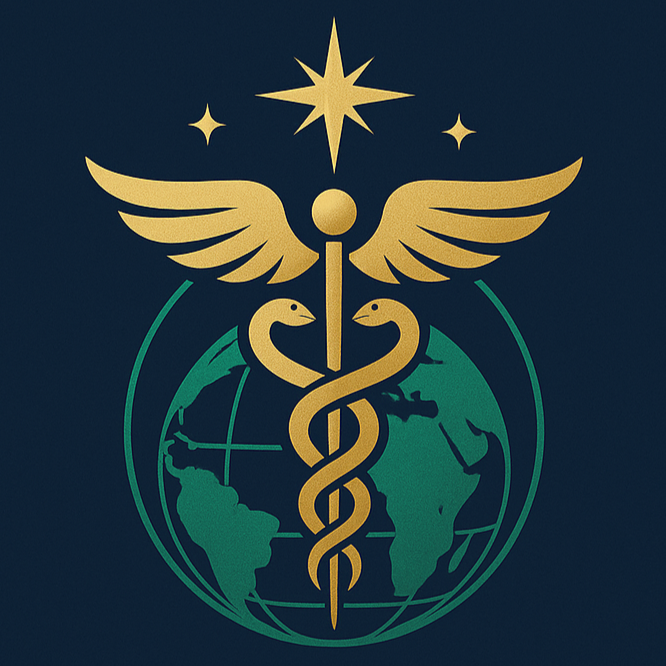What Are Gene Therapy and Gene Editing? 基因治療與基因編輯
Gene Editing and Gene Therapy use advanced technologies like CRISPR to correct defective genes or enhance regenerative capacity. The Applications could include Genetic diseases (e.g., thalassemia) or Enhancement of regenerative function (often used with stem cells)
🧬 Applications of Gene Editing and Gene Therapy
Gene Therapy: Involves introducing normal genes into the body to replace or repair defective ones. This is typically achieved using viral vectors to deliver the genes into target cells. Applications: Monogenic disorders, cancer, and rare diseases.
Gene Editing: Refers to the precise modification of DNA sequences to achieve permanent correction of genetic mutations. Techniques commonly used include molecular tools such as CRISPR-Cas9 and TALEN. Applications: Genetic diseases, cancer, HIV, agriculture, and embryo research.
🔬 Clinical Applications and Key Developments
1. 🧬 Monogenic Genetic Disorders
-
Target Diseases:
-
Sickle Cell Disease
-
β-Thalassemia
-
Inherited retinal diseases (e.g., Leber's Congenital Amaurosis)
-
Severe Combined Immunodeficiency (SCID)
-
-
Approaches:
-
Add normal copies of a gene using viral vectors
-
Use CRISPR to correct disease-causing mutations directly
-
-
Status:
-
FDA-approved therapies include Zynteglo™ and Luxturna™
-
2. 🧠 Neurological Disorders
-
Target Diseases:
-
Amyotrophic Lateral Sclerosis (ALS)
-
Huntington's Disease
-
Parkinson's Disease
-
-
Challenges:
-
Crossing the blood-brain barrier
-
Maintaining long-term neuronal safety
-
-
Strategy:
-
Deliver therapeutic genes to neural cells using AAV or lentiviral vectors
-
3. 👁️ Sensory System Disorders
-
Example: Luxturna™
-
The first FDA-approved gene therapy for inherited retinal dystrophy caused by RPE65 mutations
-
-
Mechanism:
-
Uses AAV vectors to deliver functional RPE65 genes into retinal cells
-
-
Effect:
-
One-time treatment; vision improvements can last years
-
4. 🧪 Cancer Treatment
-
Applications:
-
CAR-T cells genetically engineered to target cancer cells
-
CRISPR used to edit immune cells for enhanced anti-tumor activity
-
-
Clinical Trials:
-
Conducted in the U.S., China, and other countries
-
Used for both hematologic cancers and solid tumors
-
5. 🦠 Infectious Diseases
-
HIV:
-
CRISPR is being tested to remove latent HIV DNA from infected cells
-
The controversial CCR5 gene-editing case in embryos raised ethical alarms
-
-
Hepatitis B (HBV):
-
Gene editing aims to cut out or silence HBV DNA for a potential cure
-
6. 👶 Reproductive Medicine & Embryo Editing (Ethically Controversial)
-
Potential Use:
-
Preventing severe hereditary conditions at the embryo stage (e.g., β-thalassemia, cystic fibrosis)
-
-
Ethical Concerns:
-
Involves long-term safety, informed consent, human rights
-
Banned in most countries for reproductive purposes, but allowed in lab research under strict regulations
-
7. ⚗️ Gene Therapy Drug Landscape
- Zolgensma: For Spinal Muscular Atrophy (SMA) (FDA 2019)
- Luxturna: For Inherited Retinal Disease (RPE65) (FDA 2017)
- Zynteglo: For β-Thalassemia (EMA / FDA 2019 / 2022)
- Roctavian: For Hemophilia A (EMA 2022)
⚠️ Technical & Ethical Challenges
-
Delivery Efficiency: Vector capacity limitations and safety risks
-
Immune Response: Potential for immune rejection of vectors or introduced proteins
-
Off-Target Effects: Unintended edits in DNA may cause harmful mutations
-
Ethical Regulations: Especially regarding human germline editing and embryo research
一、什麼是基因治療與基因編輯?
基因治療(Gene Therapy):將正常基因導入體內,以替代或修復異常基因。技術上常以病毒載體將基因送入細胞中。應用範圍:單一基因疾病、癌症、罕見疾病
基因編輯(Gene Editing) :精確修改DNA序列以達成永久性矯正。技術上使用如 CRISPR-Cas9、TALEN 等分子剪刀。應用範圍:遺傳疾病、癌症、HIV、農業、胚胎研究等。
🔍 實際應用領域與代表性進展
1. 🧬 遺傳性單基因疾病治療
-
代表疾病:
-
鐮刀型貧血(Sickle Cell Disease)
-
β-地中海貧血(β-Thalassemia)
-
遺傳性失明(如 Leber's Congenital Amaurosis)
-
重症複合型免疫缺乏(SCID)
-
-
應用方式:
-
將正常基因導入骨髓造血幹細胞中
-
或使用 CRISPR 將致病突變段修復
-
-
現況:部分基因治療如 Zynteglo™、Luxturna™ 已獲得 FDA 核准
2. 🧠 神經系統疾病
-
治療疾病:
-
漸凍人症(ALS)
-
亨丁頓舞蹈症(Huntington's Disease)
-
帕金森氏症(Parkinson's Disease)
-
-
挑戰:
-
需要穿越血腦屏障(BBB)
-
必須避免破壞神經系統的穩定平衡
-
-
研發方向:
-
使用病毒載體(如AAV)精準遞送修復基因至神經細胞
-
3. 👁️ 感覺系統疾病
-
應用案例:
-
Luxturna™:全球首款 FDA 核准的基因療法,用於治療遺傳性視網膜病變(RPE65缺陷)
-
-
機制:透過腺相關病毒(AAV)將功能性基因送入視網膜細胞,改善視力
-
特點:一次性治療,療效可持續多年
4. 🧪 癌症治療
-
技術應用:
-
基因修飾 T 細胞(如 CAR-T)使其具備辨識腫瘤的能力
-
利用 CRISPR 編輯免疫細胞以增強抗癌效能、降低副作用
-
-
實例:
-
中國、美國已完成多項 CRISPR 編輯 T 細胞的臨床試驗
-
用於實體腫瘤(如肺癌、食道癌)與血液癌症(如白血病)
-
5. 🦠 感染性疾病
-
HIV 基因編輯:
-
嘗試透過 CRISPR-Cas9 刪除 HIV 潛伏於基因中的病毒片段
-
中國有報導進行胚胎編輯實驗,但爭議極大(例:CCR5 雙基因突變嬰兒事件)
-
-
乙型肝炎(HBV):
-
研究中探索以基因編輯方式切除或抑制 HBV DNA,達到病毒清除
-
6. 👶 生殖醫學與胚胎編輯(具爭議性)
-
潛力:
在胚胎階段修復嚴重遺傳疾病(如地中海貧血、囊腫性纖維化)
-
爭議:
涉及倫理、人權與長期未知風險。多數國家禁用於生殖用途,但可進行體外研究或胚胎期研究(限期銷毀)
7. 🧬 基因治療藥物發展現況
Zolgensma:脊髓性肌肉萎縮症(SMA)。FDA 2019 核准
Luxturna:遺傳性視網膜病變。FDA 2017 核准
Zynteglo:β-地中海貧血。EMA/FDA 2019/2022 核准
Roctavian:血友病A(基因治療)。EMA 2022 核准
⚠️ 技術限制與挑戰
-
基因送遞效率問題:如病毒載體的攜帶量限制、安全性考量
-
免疫反應風險:可能產生對載體或新蛋白的免疫排斥
-
脫靶效應(Off-target Effect):CRISPR等技術可能不小心改錯位置,導致基因突變
-
倫理與法律:特別是涉及生殖細胞或胚胎的編輯

